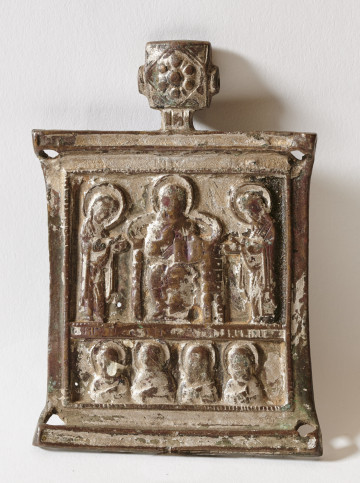
Council of Saints
koniec XIX w.
Castle Museum in Łańcut
Part of the collection: Meble i wyposażenie wnętrz
Tables are some of the furnishings with the most diverse designs and shapes. In the 19th century, tables with round tops were especially fashionable; they were manufactured in different varieties, from small, convenient ones to large dining tables. The design of tables, which usually take up a large amount of usable space, started including many solutions that allowed the tabletop to be folded, reducing the space it occupied when not in use. An example of such a solution can be seen on the displayed table with a tilting or 'screen' top. The mechanism and hinges located below the tabletop allow it to be locked in a horizontal or vertical position. The heavy, veneered wooden tabletop measuring over 1m in diameter is counterbalanced by a stable base shaped like a triangle with concave sides and cut off points. The legs installed in the base have the shape of three columns instead of one heavy pole. To ensure greater stability of the table when folding and raising the top and to avoid optically increasing the heaviness of the columns, they were spaced out to leave gaps. Replacing a single support with lighter elements visually relieves the weight from the lower part of the table, imbuing it with lightness and elegance. Edited by Teresa Bagińska-Żurawska https://orcid.org/0000-0002-9243-3967
Object type
Furniture and interior fittings
Owner
Castle Museum in Łańcut
Identification number
Location / status

koniec XIX w.
Castle Museum in Łańcut

połowa XIX wieku
Castle Museum in Łańcut

XIX century
Castle Museum in Łańcut
DISCOVER this TOPIC
Castle Museum in Łańcut
DISCOVER this PATH
Educational path